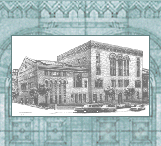

Our
mission is to reduce the number of injuries and deaths due to
injuries,
through prevention, improved trauma care, and improved rehabilitation.
"When you get hit, you don't just bounce back. I got a lot rougher deal than the guy driving the car. For a while I was doing pretty good, but the hip started messing up again. There's pain still and I walk all cockeyed. "
James Brennan,
victim of a red-light runner.
August 15, 2002
.
 Red
Means
Red
Means
In the 1984 film "Starman" an extraterrestrial space traveler comes to Earth with a message of peace and assumes a human identity to learn about our world. Audiences laughed when he commented on the driving of his human companion --" I see, yellow means go very fast."
Eighteen years later, Americans are still "going very fast" at yellow lights and frequently running red lights as well -- that is, entering the intersection after the signal has turned red. When polled, nearly everyone agreed that running red lights was dangerous, yet over half admitted to deliberately doing so. When asked why they run red lights, many Americans said, "Because they were in a hurry!" 1 Other reasons may be that the light is poorly timed, there may be limited visibility or the driver may be inattentive.
The Facts About Red-Light-Running
In 2000, the Federal Highway Administration estimates there were 106,000 crashes, 89,000 injuries and 1,040 deaths attributed to red-light-running.2
Nationwide, fatal crashes at traffic signals increased 18% during 1992-98, more than three tmes the rate of increase for all other fatal crashes during the same time.3
Seventy-eight percent of the public wants more attention paid to improving intersection safety and a majority of 2 to 1 favor red-light enforcement cameras. 4
Two of three Americans see other drivers run red lights every day.5
Statewide in California, fatal collisions involving pedestrians increased slightly in 2001; San Jose showed a similar decline, dropping 35%; Berkeley reported only 1 pedestrian death and Oakland 8, while Los Angeles experienced a 36% increase in pedestrian deaths. In San Francisco pedestrian deaths plummeted 41% last year. 6
Possible Solutions
In San Francisco police increased red light running ticketing; installed more pedestrian-crossing devices such as countdown signals indicating the time left to cross the crosswalk before the light changes; the city increased the time people have to walk across the street on a green light; used brightly colored paints to paint crosswalks; installed lighting embedded in the pavement; and conducted public awareness campaigns.
The most common crash type - a driver violating a traffic control - might be reduced by re-timing signal clearance intervals, improving signal and sign conspicuity and visibility, increasing decision sight distances, or reducing vehicle speeds near intersections.
Red-light Enforcement
One way to bring about stricter enforcement of the law is with automated cameras mounted at intersections which are triggered if a car goes into an intersection after the signal light turns red. A picture is taken of the car and a ticket is mailed to the owner of the vehicle. Red-light enforcement cameras have been shown to be effective at reducing the number and severity of intersection crashes. A study by the San Francisco Department of Parking and Traffic found that after six months of using red-light cameras, violations dropped by 42%. Citywide red light crashes decreased by 10%.7
Red-light enforcement cameras are used in 15 states, and are common in many major American cities including San Francisco, New York City, Washington, DC, Baltimore, and Los Angeles. Photographic detection devices are also used in many other countries, including the United Kingdom, Australia, Canada, South Africa, and Germany.
But the technology is controversial. An audit of California's red-light-enforcement cameras credits the technology with curbing accidents but shows that local governments should take better command of their programs. In San Diego, last year a judge threw out nearly 250 citations after ruling that the city failed to properly supervise the private company hired to install and run the cameras. San Diego has since suspended the camera program. 8
Pedestrians Are at Greater Risk
"When you get hit, you don't just bounce back," said James Brennan, who was a victim of a red light runner in 1997. He spent 77 days at San Francisco General Hospital. The driver of the car was sentenced to a year in jail. "I got a lot rougher deal than the guy driving the car. For a while I was doing pretty good, but the hip started messing up again. There's pain still and I walk all cockeyed. " For more about James' story, click here.
References
1. U.S Department of Transportation, 9/23/99 press release, http://www.dot.gov/affairs/1999/fhwa6099.htm
2. Insurance Institute for Highway Safety News Release, July 13, 2000 http://www.hwysafety.org.news%5Freleases/2000/pr071300.htm
3. Public Opinion Poll conducted by Louis Harris for Advocates for Highway and Auto Safety, September, 2001 http://www.saferoads.org/polls/harrispoll01highlights.htm
4. U.S. Department of Transportation, Sept. 4, 1998 http://www.dot.gov/affairs/1998/fhwa3798.htm
5. San Francisco Chronicle "Safer to walk streets of San Francisco" Page A25, Col.3, July 28, 2002
6. The Sacramento Bee, 7/24/02 http://www.sacbee.com/content/news/v-print/story/3700756p-4726624c.html
More information:
The Stop Red Light Running Program
http://safety.fhwa.do.gov/programs/srlr.htm
Red light cameras
http://www.iihs.org/safety_facts/rlc.htm
Red Light Running Survey in Metropolitan
Richmond VA
http://www.vcu.edu/srl/press/dmvpr2.htm
 |
 |
|---|